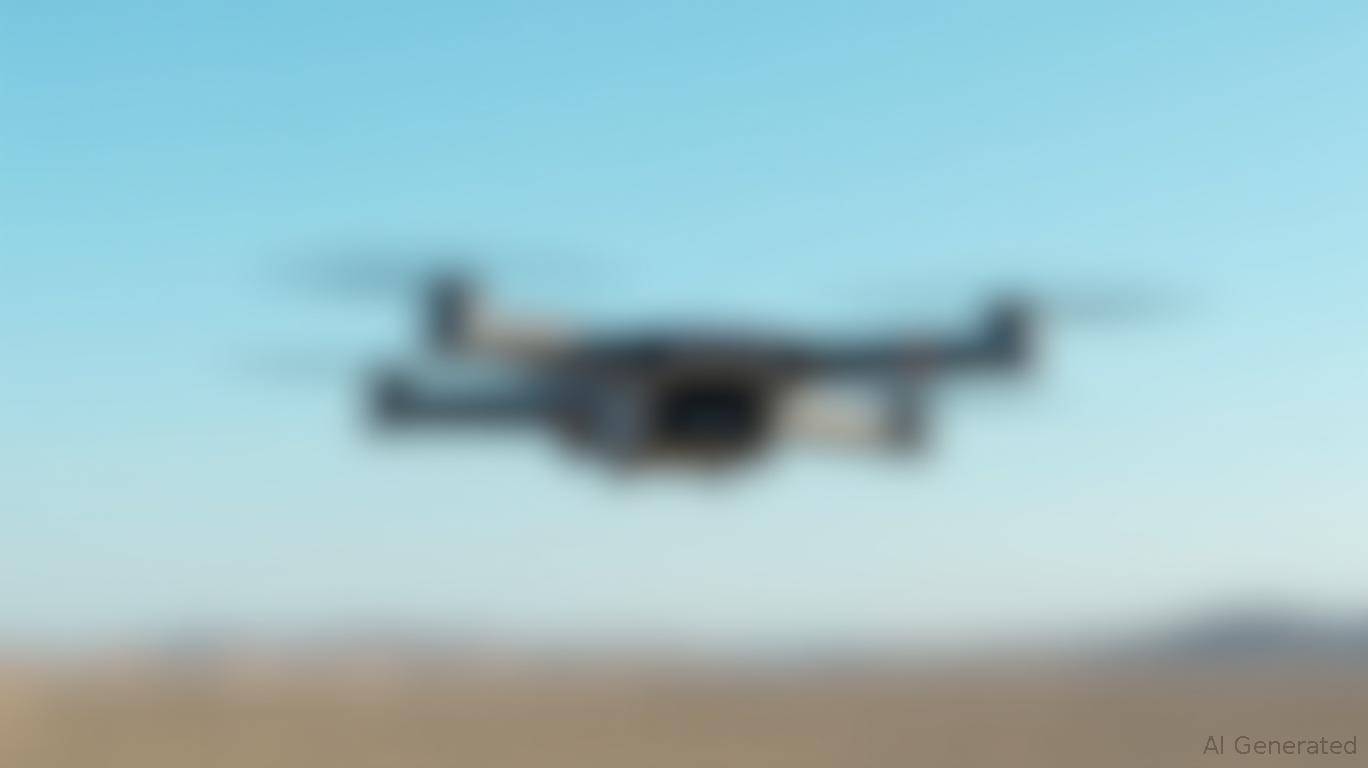Why Draganfly's Flex FPV System Is a $100B Military Drone Boom Play
The global military drone market is on the cusp of a historic inflection point, and
(DROTF) stands at the center of it. The Canadian-U.S. firm's Flex FPV system, a modular drone designed for battlefield agility and tactical precision, has just secured a milestone delivery to a major U.S. defense prime contractor—a critical validation of its combat-ready capabilities. With geopolitical tensions driving a surge in defense spending and supply chain nationalism, Draganfly's Flex FPV is positioned to capitalize on a market that could hit $100 billion in the next decade.The Proof of Concept: Battlefield-Tested in Ukraine
Draganfly's Flex FPV system isn't just another drone. It's a modular, high-speed platform that has already proven its mettle in active combat zones. Delivered to a U.S. prime contractor supporting allied forces in Ukraine, the Flex FPV's design emerged directly from frontline experience. Its ability to switch arm configurations and payloads in seconds—without specialized tools—has made it a favorite for missions ranging from reconnaissance to payload delivery.
The system's pedigree is clear: it's been tested in the harshest conditions of modern warfare. As Cameron Chell, Draganfly's CEO, noted, the Flex FPV was refined through real-world applications in Ukraine, where it demonstrated its reliability under fire. This battlefield credibility is unmatched by many competitors and positions the system as a go-to solution for allies seeking robust, adaptable drones.

Technical Differentiation: Modular Design and Swarm Potential
The Flex FPV's modular architecture is its secret weapon. With a payload capacity of 10 lbs and speeds exceeding 149 km/h, it can carry everything from cameras to counter-drone systems. But its true innovation lies in its adaptability. The drone's picatinny rail and custom mounts allow rapid reconfiguration for diverse missions, while its autonomous waypoint system reduces operator workload.
Equally critical is its role in swarm operations. The Flex FPV integrates with Virtual Reality Rehab's Holowarrior platform, enabling coordinated swarms of drones to overwhelm adversaries. This capability is a key growth driver, as militaries increasingly prioritize swarm tactics to counter electronic warfare and drone swarms from adversaries.
Secular Tailwinds: Geopolitics, Supply Chains, and Budgets
The Flex FPV's timing couldn't be better. Three megatrends are converging to fuel demand:
Geopolitical Risks: The Ukraine war has exposed vulnerabilities in traditional supply chains, pushing NATO allies to diversify sourcing. Draganfly's North American manufacturing aligns perfectly with U.S. and allied priorities to reduce reliance on Chinese-made drones.
Defense Budgets: Global military spending is projected to rise steadily, with the U.S. alone allocating over $800 billion annually. The tactical UAS segment is a prime beneficiary, growing at a 12% CAGR to nearly $187 billion by 2034.
Technological Arms Race: AI, autonomy, and battery advancements are making drones smarter and more lethal. The Flex FPV's modular design allows it to evolve alongside these technologies, ensuring it stays relevant as capabilities advance.
Catalysts to Watch: A Pipeline of Opportunities
Draganfly's near-term catalysts are abundant:
- Q1 2025 Revenue Growth: Despite a reported loss in Q1, the company maintains a strong cash balance to fund development. Analysts project a 63% revenue increase for FY2025, driven by existing contracts and pipeline opportunities.
- Contract Expansions: The Flex FPV's delivery to a prime contractor is just the start. With a $100+ million contract pipeline, including partnerships with the U.S. DOD for swarm integration, the company is primed for scaling.
- Swarm and Payload Innovations: Collaborations like the Commander 3XL drone deploying Flex FPVs as sub-drones could unlock new revenue streams in multi-domain operations.
Addressing Near-Term Concerns: Cash Burn vs. Strategic Positioning
Critics may point to Draganfly's Q1 losses, but the company's strategy is clear: invest aggressively in R&D and partnerships to secure long-term dominance. With a cash balance of $13 million (as of Q1) and a focus on high-margin defense contracts, the burn is manageable. As Chell stated, “This is a strategic inflection point. We're prioritizing contracts with clear revenue trajectories.”
The Investment Thesis: A $100B Market Play at a Tipping Point
The tactical drone market isn't just growing—it's transforming. While the $100 billion figure cited in the prompt might not materialize in 2025 (current estimates peg 2025 military UAS sales at ~$67 billion), the trajectory is undeniable. By 2030, the market could surpass $100 billion, and Draganfly is uniquely positioned to capture a meaningful slice.
With battlefield credibility, modular innovation, and a pipeline fueled by defense priorities, Draganfly is more than a drone maker—it's a play on the next generation of military tech. For investors willing to look past short-term noise, this is a rare opportunity to bet on a company at the vanguard of a $100 billion boom.
Final Call: Act Now or Miss the Takeoff
The Flex FPV's milestone delivery isn't just a contract win—it's a signal. As militaries worldwide prioritize speed, adaptability, and North American supply chains, Draganfly's timing couldn't be better. The risks are clear, but the rewards of riding the tactical UAS boom are even clearer. For investors seeking exposure to this secular trend, Draganfly offers a compelling entry point before the market's full potential is realized.

Comments
No comments yet